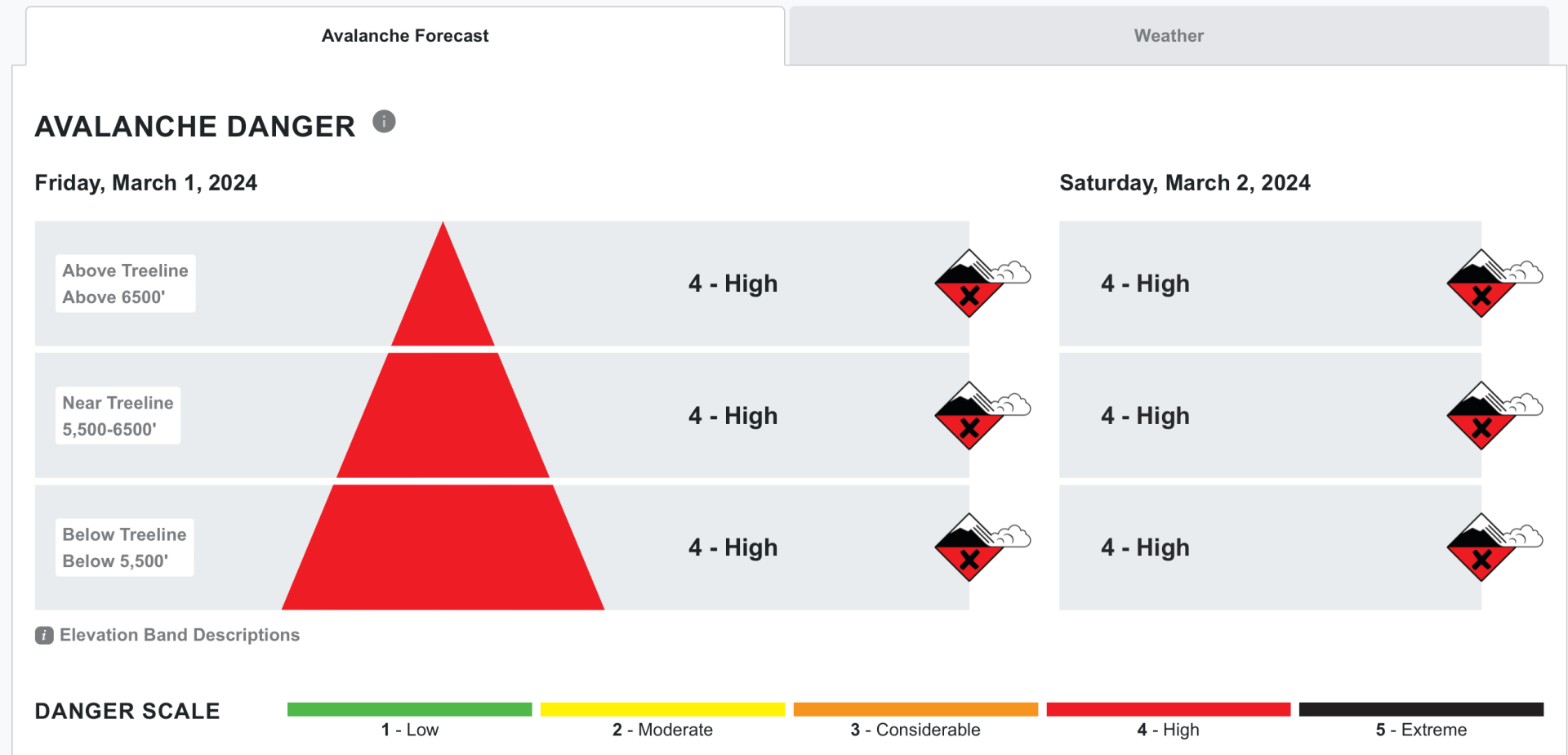
Two snowmobilers were killed in separate avalanche incidents on Friday, March 1, as heavy snow continued to fall on the west.
On March 1, 2024, at approximately 1:30 p.m., Law Enforcement received a call alerting them of a possible avalanche fatality in the southern Selkirk mountains, near the Pack River drainage, in Boundary County, Idaho. High avalanche danger and strong winter weather delayed the mission. Crews found 54-year-old Lance Gidley under four feet of snow at 8 p.m. on Saturday night. Boundary County Sheriff’s Office said it took rescuers nine hours to find Gidley because of the terrain and weather. Both Gidley and his friend were experienced snowmobilers and were wearing avalanche beacons.
Another avalanche accident occurred on Friday, March 1, near Darland Mountain in the Ahtanum Meadows, Washington. Two snowmobilers were involved in the slide. One rider was fully buried and killed. The avalanche occurred around 6,600 feet in a generally east-facing bowl. NWAC staff visited the accident site on Saturday. Our deepest condolences to the family, friends, and community. This avalanche likely failed on older persistent weak layers in the snowpack. This problem is not unique to the East-South zone. Many other areas are dealing with the exact same problem. Please check the forecast before heading out for additional details for your zone.
The avalanche rating in the Selkriks on Friday was ‘High’ and an avalanche warning had been issued. The Idaho Pandle Avalanche Center said, “Dangerous avalanche conditions are present due to intense winds and wet storms. Avoid being in avalanche terrain. Natural avalanches have been observed. Human-triggered avalanches are very likely.
At the time, the avalanche rating in the Washington area was ‘considerable,’ with the North-West Avalanche Center saying, “Dangerous avalanche conditions will continue with ongoing wind and light snow. Avalanches may be easy to trigger on steep slopes where you find up to 2 feet of recent snow, and especially where the wind forms drifts below ridges and cliffs. With the potential to trigger dangerous avalanches on older weak layers, it’s best to avoid being on or under terrain where very large avalanches could start or run from above.”
The fatalities are the ninth and 10th avalanche-related deaths in the US this winter. There have also been two deaths in Canada.
